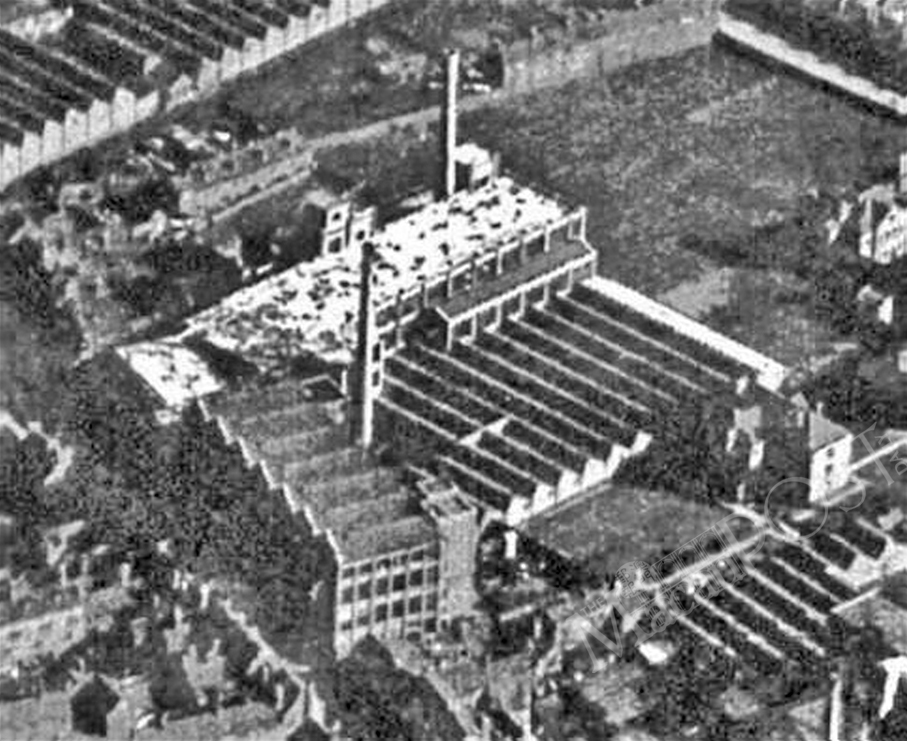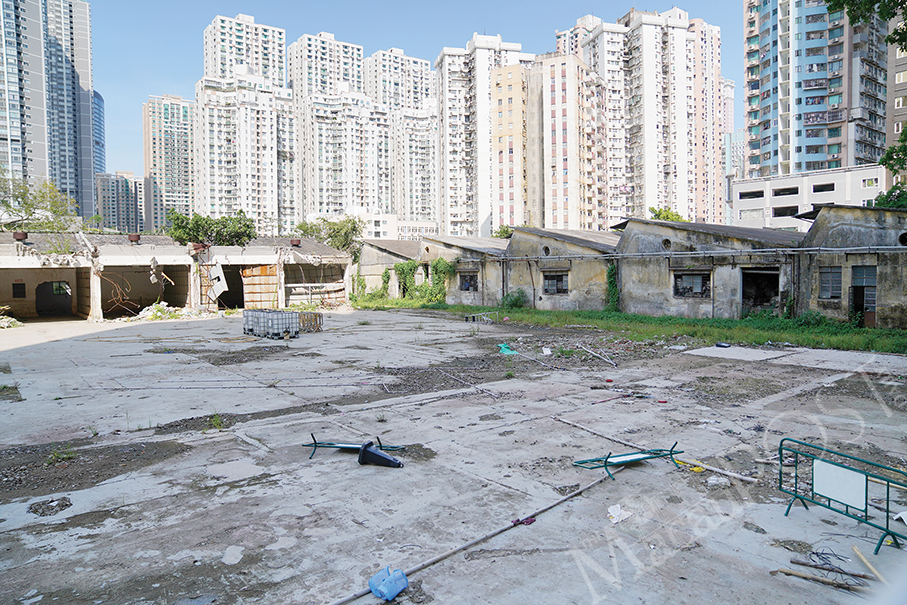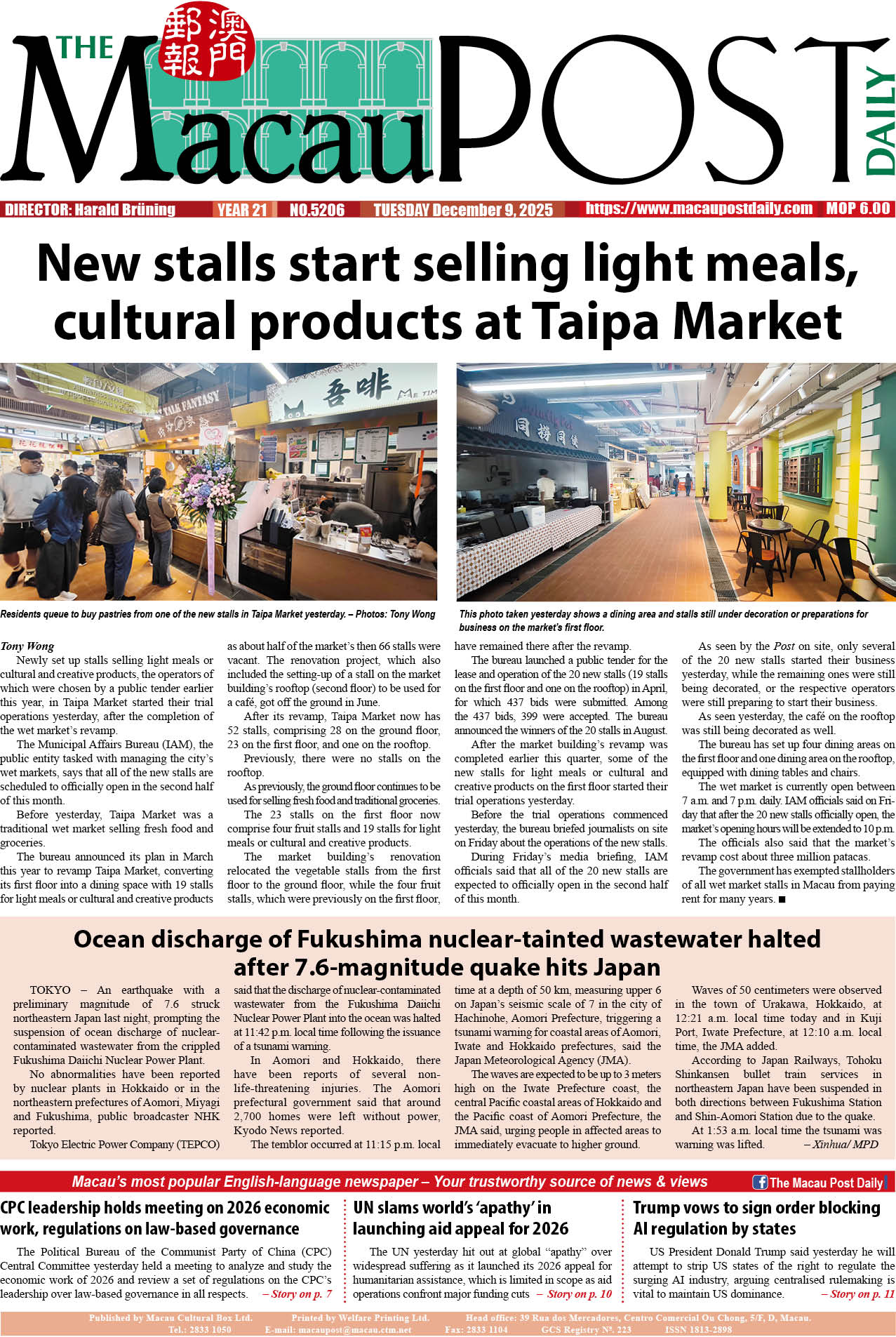Commentary by Philip Chan King-lok*
One of the Macau Municipal Affairs Bureau’s (IAM) latest leisure space projects – the city’s first-ever “Tyre Park” over four idle plots in central Taipa and the public’s concern for a to-be-demolished local industrial heritage asset – an old textile factory building (which functioned as a cotton and weaving mill) located within the same plots have been extensively covered by the media since last August. A couple of weeks ago, the Secretariat for Administration and Justice (SAJ) and the Municipal Affairs Bureau indicated a possible delay in the provisional project while the Cultural Affairs Bureau (IC) suggested retaining the “featured elements” of the former weaving mill building. From an architectural conservation perspective, the author would like to address a fundamental question beyond general facts and historical background – What should be preserved? Specifically, what are the elements contributing to the architectural interest of the building?
Sawtooth roof – origin and technical principles
As the most recognisable attribute of the weaving mill in Taipa, the sawtooth roof design has been widely adopted in various industrial and manufacturing buildings, essentially cotton mills and spinning mills from the late-19th century to the mid-20th century. Adapted from the ‘shed principle’ design by British architect and engineer William Fairbairn (1789-1874) in the mid-19th century, the sawtooth roof system allows natural lighting but protects workers, machinery, raw materials and products from direct sunlight exposure, thus significantly lowering the chances of overheating the interior and colour fading in light sensitive substances, for example, textiles and dyes. The design features an array of parallel pitches and ridges over the roof, with the steeper surfaces (the roof windows or glazing) facing away from the direction of maximum solar intensity, or the equator in general. The sawtooth inclination varies across geographical locations but the typical range is between 60° - 90°.
Based on the author’s visual assessment, the building orientation of the former weaving mill in Taipa suggests its roof glazing is northeast-facing while its roof shading is southwest-facing, and the sawtooth inclination roughly measures 60°. That is to say, the 1960s’ plan employed the principles of sawtooth roof design in the construction to shield the building as an object located within the Northern Hemisphere low latitudes from the harsh afternoon southwest sunlight.
Sawtooth roof weaving mills in the Chinese mainland
The sawtooth roof design is also found on cotton mills and weaving mills in other parts of China. Among the extant sawtooth roof weaving mills, two of the notable examples are Xi’an’s Dahua Weaving Mill (西安大華紗廠) and Tianjin’s Yueda Weaving Mill (天津裕大紗廠) – the two mills underwent adaptive reuse and renovation over the last decade. The former has been developed into ‘Dahua’ 1935’ (大華1935) since 2013 and the latter into ‘Miansan Creative Blocks’ (天津棉三) since 2014 (it was also recognised as a site of The Fourth Batch of The National List of Industrial Heritage in 2020). Both are positioned as local cultural creative landmarks consisting of leisure facilities, museum and dining components. However, the architectural integrity of the entire mill complex had received a considerable degree of respect including the fully restored sawtooth roofs.
What should be preserved?
To address the initial question, there is no doubt the sawtooth roof is a must-be-preserved feature as it is identified as a character-defining element which contributes to the architectural value of Taipa’s former weaving mill. Moreover, this weaving mill is also the most intact complex of its type and exhibits the best preserved sawtooth roof system in the city.
Apart from the historical facts revealed earlier and the architectural tectonics interest discussed in this article, the author suggests the authorities take reference from the two abovementioned successful cases and invite researchers to assess the social value of the weaving mill through community-level surveys in order to yield a holistic and scientific evaluation. Such evaluation and case study would not only facilitate the conservation decision for the weaving mill but serve as an integral part of the master plan of the “Tyre Park” project.
*Lecturer, Macao Institute for Tourism Studies
Professional Member, Hong Kong Institute of Architectural Conservationists

An example of the sawtooth roof is this factory built for Morris Engines Ltd., at Gosford Street, Coventry in 1923. Source: Seymour, Peter J., “Morris Bullnose & Flatnose 11.9 & 13.9 h.p. Power Units,” 1995 & 2008. Courtesy of Wikipedia
This photo taken last August shows the site of the future “Tyre Park” in Taipa. Photo: Monica Leong

This photo taken last August shows the area where a dilapidated sawtooth roof factory compound building in Taipa has been demolished by the government, and the remaining part that, according to the government, is slated for demolition. The area is part of the government’s temporary “Tyre Park” project. Photo: MPDG









